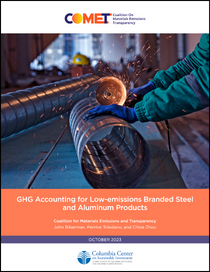GHG Accounting in the Steel and Aluminum Industries
Steel and aluminum production represent two of the largest industrial sources of greenhouse gas (GHG) emissions, and producers of these materials have excessive leeway when it comes to the accounting of their emissions. CCSI’s reports examine the shortcomings of GHG accounting methodologies in the steel and aluminum industries and propose frameworks to improve these methodologies.




